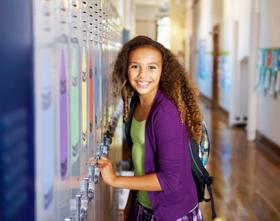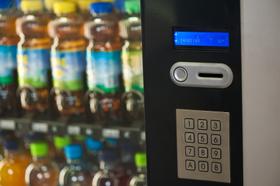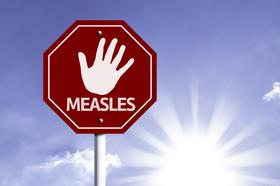In the quest to ensure students are getting all the academic instruction they need throughout the school day, lunch breaks are often the first item to go on the chopping block. Some school districts have cut lunch to just a few minutes, forcing students to wolf down their food as quickly as possible so they can return to their more valuable classroom time. But is sufficient time for a midday meal really as non-essential as some school districts lead parents and students to believe? Some research and anecdotal evidence states otherwise.
A Rising Trend
USA Today reports on recent figures by the School Nutrition Association that show elementary school students have approximately 25 minutes for lunch, while middle and high school students have around 30 minutes. This includes the time it takes to get into the lunchroom, wait in line for a meal and find a place to sit. By the time some children get to their seats and open up their food, their time is down to 15 minutes or less in many cases.
Although shorter lunches have been the trend in U.S. schools since 2009, that has not always been the case. According to USA Today, children were getting up to five additional minutes a day to eat their midday meal than they do currently. In other countries, the contrast is even greater, with countries like France giving children up to two hours to enjoy their lunches in the middle of their school day.
“Fast Food” Norm Not Healthy for Students
The U.S. government recommends that children have a minimum of 20 minutes to actually eat their lunch. However, many nutrition experts say even this is not enough for children to properly eat and digest their food before heading back to class. Karen LeBillion, author of French Kids Eat Everything was reported on the Minyanville website as saying,
If we are giving our children a short lunch break, we are teaching them that food is an inconvenience, and eating is an interruption in the day. We encourage them to gobble their food, when the research shows that eating more slowly is healthier. In fact, the French spend longer eating…because they believe it’s important to teach kids to eat well – it’s a life skill like reading.
Dr. Arthur Agatston, cardiologist and creator of the South Beach Diet, agrees. He told the New York Times, “The lunchroom culture is fast food. But it shouldn’t be fast food. The teacher should be sitting at the table with a tablecloth for a civilized meal. I think it’s a huge learning opportunity for kids.”
From the rising obesity rates in the U.S., it appears school lunches are a missed opportunity with potentially serious consequences. USA Today reports government statistics that show 25 million kids are considered overweight or obese in this country today. In addition, around 35 million students eat lunch in school every day, with more than 11 million eating breakfast at school as well. That means the majority of children in this country are getting between 30 and 50 percent of their daily caloric intake from what they consume at school.
Research suggests that when people consume meals faster, they tend to take in more calories and still feel hungry much sooner. Deborah Taylor, director of the Shawnee School Nutrition Services in Oklahoma, told USA Today that when people look back on the childhood obesity epidemic, they may blame the way kids rushed through meals, both at school and at home.
Healthy Food Guidelines May Not be Enough
Recently, the USDA set new nutrition standards on food that is served in public schools, as a response to the Healthy, Hunger-Free Kids Act of 2010. Those standards will include more fresh produce and whole grains, fat-free milk and salad bars. However, experts say that the more nutritious food also takes more time to eat, which means kids may be served fresher, healthier fare, without sufficient lunch breaks to enjoy their meals.
“It takes more time to chew a whole apple than applesauce,” Helen Phillips, president of the School Nutrition Association, told USA Today. “Eating an entrée salad takes longer than eating a cheeseburger or chicken nuggets, because of the crunching and chewing of the raw vegetables.”
There is no doubt that healthy fare served in school lunchrooms will make kids’ bodies healthier, but what about their minds? Research has also shown that a combination of nutrition and physical activity may improve academic performance. A report from Action for Healthy Kids at the Washington State Board of Health website states, “When children’s basic nutritional and fitness needs are met, they have the cognitive energy to learn and achieve.”
Success Stories in the Making
Some schools have made changes to the school lunch schedule, with significant success. According to the Baltimore Sun, Arundel High School has a 50-minute lunch period to give students time to eat, socialize, finish up homework or get personalized attention from teachers. Janet Epple, a sophomore biology teacher, told the Sun, “It’s going to solve a lot of problems.”
Longer lunches have also come to the Ogden City School District in Utah. According to KSL TV, students are rewarded with longer lunch periods if they reduce the number of tardies and keep up with grades. Teachers at the school say the new program, which offers students more time to socialize has significantly reduced the number of tardy slips at the school overall.
“Socialization is a great reward for teenagers, because they love to hang out and spend time together,” Ogden High School principal Stacey Briggs told KSL.










































































